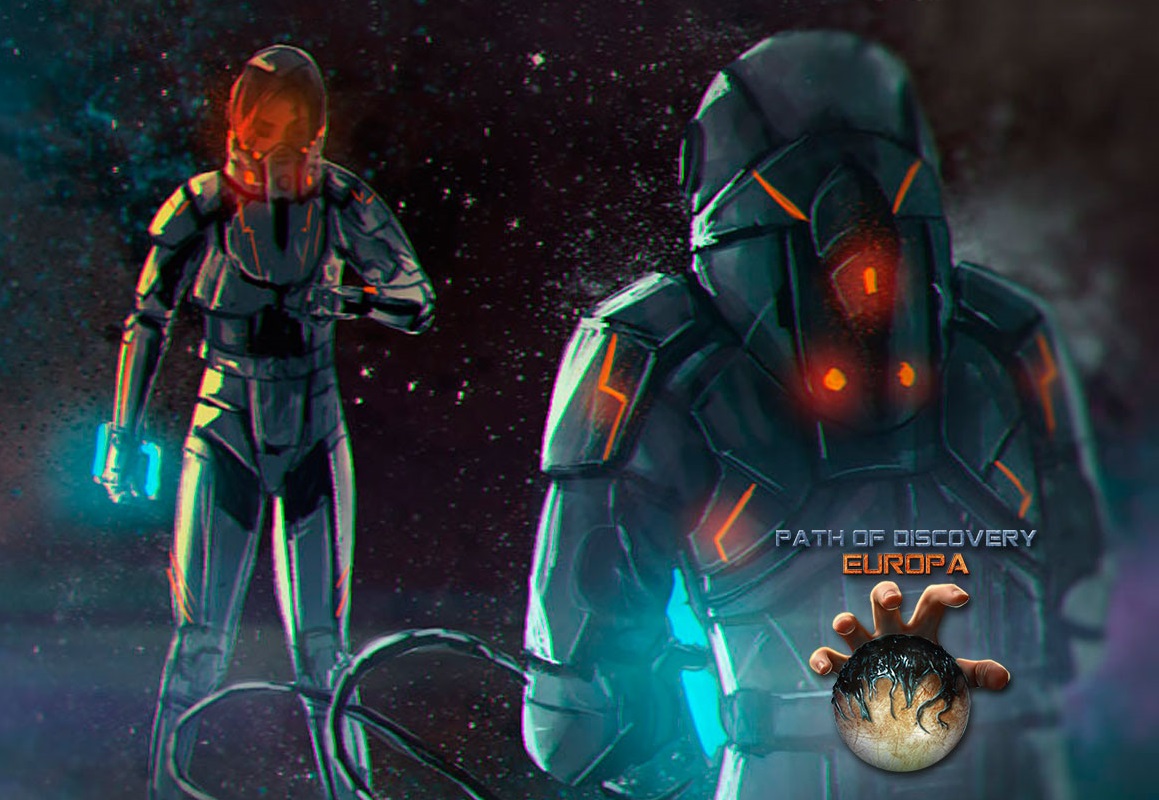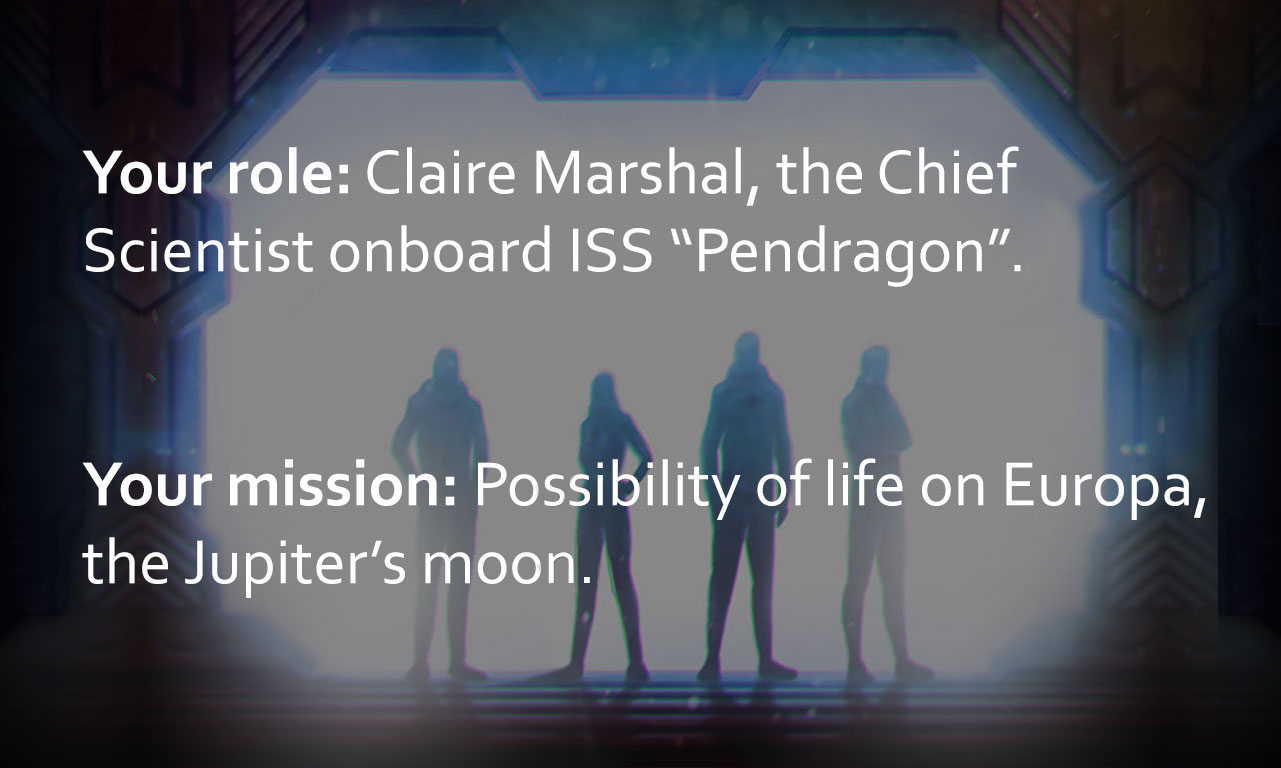On October 6 Eipix released Path of Discovery: Europa, a voice-controlled adventure designed for Amazon Alexa devices. Since this was our first time developing this type of game for a brand new platform, we asked the game team to share some insights into the development process. Here’s what they had to say…
Making video games in the age of accelerating technological development has both its downsides and its upsides. On one hand, you often find yourself lagging behind the latest updates and constantly pursuing the latest solution that will be replaced by an even newer one as soon as tomorrow. On the other, sometimes you get a chance to try something wholly new and innovative, something that takes you out of your comfort zone, forces you to rethink everything you think you know and devise unique solutions for unique problems.
Developing Path of Discovery: Europa, a voice-controlled Sci Fi adventure game intended for Amazon Alexa devices, has been an exploratory, revealing, and ultimately rewarding experience. It pushed us to break the game down to its most basic elements and rethink each and every one of them in order to translate them into a new medium, one that creates unusual limitations and asks for a different type of storytelling.

Story-wise
In approaching the new medium, we first looked at the overall landscape of games (or, we should say, “Alexa skills”) available for Alexa devices, in order to assess how we can expand upon it. We have detected a clear lack of Sci Fi entertainment, and the decision was quickly made: we would design a high quality Sci Fi adventure to be played in the safety of your home.
In its essence, Path of Discovery: Europa is a choose-your-own adventure game told through sound. What this meant was that the entire story and all player actions had to be told through nothing but spoken words and sound effects – a stark contrast to our usual modus operandi that relies heavily on images and animation.
Since the player only relies on sound, without any visual or textual references that they can consult and revisit, special attention had to be paid to the clarity and the simplicity of the language.
Genre conventions brought further limitations. With the average length of Alexa-powered games clocking in between 10 and 15 minutes, there wasn’t that much room for our game designers to spread their creative wings, especially when you consider that you needed to fit numerous branching narratives into the projected game duration.
Luckily for us, we have already gathered some experience from working on the text-based adventure series Lifeline: Whiteout, which also excluded images from its narrative technique. However, audio placed even greater emphasis on clear and understandable storytelling. Despite its Sci Fi setting, the game couldn’t possibly involve any complicated concepts, since there was no room for it. There was also no room for lagging and “empty air”, since the player wishes to be pulled into action immediately and dislikes wasting time on story elements that lead nowhere. Finally, add to this the fact that individual segments for Alexa skills aren’t supposed to last longer than 90 seconds, and it’s clear that every single word needed to be optimized and used to full effect.
In terms of game mechanics, after each segment unfolds the player receives clear questions on his further course of actions. The biggest balancing act is giving the players a clear hint on what their options are without guiding them towards any specific answer. The intuitive approach worked best for us, since it didn’t take anything away from the experience while maintaining the illusion of free will. This is how it works in practice…
Instead of formulating a question in this manner:
“If you want to hear the transmission, say ‘Hear it’, if you don’t want to hear it say ‘Refuse’”,
you simply say:
“Do you want to hear the transmission?”
This way, you allow the players a broader choice of answers, like “yes”, “no”, “hear it”, “refuse”, “play it”, etc, instead of confining them to fixed, pre-defined answers. Still, it is our duty to try and predict any possible answers a player could give, and once the questions were defined we set about this task. Of course, we could not implement an entire dictionary for these purposes, narrowing the choice of answers down to about five that would push the story forward. Different versions of answer sets were tested numerous times by our QA team in order to make them as intuitive and logical as possible. Once this process was complete, we had the entire story ready to go.

Sound of Adventure
Even though Alexa has its own text-to-speech (TTS) system that works very well, we still chose to go with professional voice actors in order to provide the best possible storytelling experience. We hired voice actors with distinct voices, so that the player would have a clear representation of different characters in the game.
Obviously, the most important role was that of the narrator/main character, where the actor simultaneously had to maintain the formality of a de facto game guide AND convey emotion that every individual scene requires. It’s a tricky balance, but we’re delighted with how it turned out.
Additional synthetic voices, such as those of droids and alarms, were created through the TTS system and then heavily processed by our sound designers, thus giving it a strange and unique quality.
Sound effects also play a big part in the overall player experience. They needed to be distinct and authentic, but without interfering with the voices and dominating the whole sonic picture. In short, they needed to enrich the story, not drive it. We have established a fine balance where all relevant in-game events were accompanied by side effects without sacrificing the story. Aside from the effects, our sound designer also needed to create a musical composition that would make the game truly shine. We used countless Sci Fi movies as a source of inspiration, particularly hard boiled genre gems such as Alien, Blade Runner, Sunshine, Prometheus, or Passengers.
Surprise Factor
As we were developing Path of Discovery: Europa, Amazon announced Alexa Echo Show, the first Alexa device to feature a visual display. Impressed with the technology, we chose to further adjust the game specifically for the functions of this new device. This also allowed us to create a visual presentation of the game and provide the Echo Show players with a bit more context and atmosphere.
We wanted each scene to have its accompanying graphics. It would allow the players an easier way to connect with the characters, while always maintaining a clear picture of the events currently taking place. How to implement the graphics was a whole other issue. Our art team worked hard on translating the atmosphere of the game into the scenes, and we wanted to show them in as much detail as possible. Therefore, the scene graphics received a full screen display.
Still, the images can only provide so much information. In order to further root the player to the scene, we chose to add a brief textual description that shows game progress and hints at available voice commands. This is not a cutting edge feature by any means, but it does illustrate the flexibility, the thinking and the constant work required to be able to answer the latest developments in modern technology.
Ultimately, working on Path of Discovery: Europa has allowed us to flex our game development muscles and approach our work with fresh perspectives. Stepping into uncharted territory is never easy, but now that we have done it, there’s only one thought on our minds – Path of Discovery: The Sequel!





